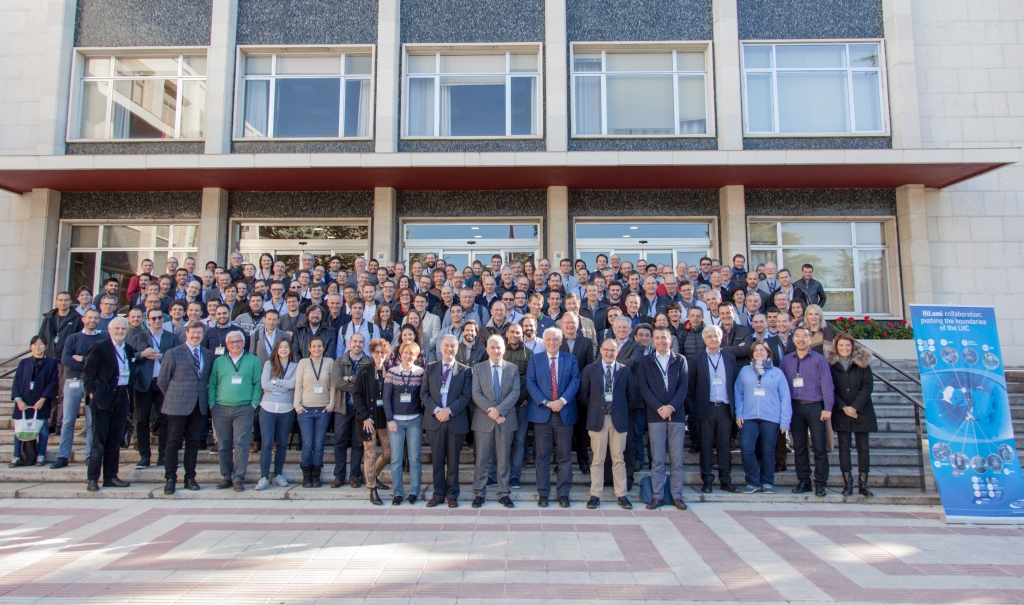The 7th HL-LHC Collaboration Board took place during the 7th HL-LHC Annual Meeting in November 2017, jointly organized by CIEMAT and CERN in Madrid, Spain.

One of the focuses of the 7 th HLCB meeting was a summary of the existing agreements for in-kind contributions from collaborators. Since the HLCB meeting in Paris, the project has signed various collaboration agreements with the UK, Sweden, INFN and CEA. A collaboration agreement with CIEMAT is well advanced and a new Addendum to the CERN-BINP Protocol is under preparation. Since the HLCB in Madrid, the project has advanced collaboration discussions with Canada, Russia and China. The project goal is to finalize any additional in-kind contributions by the end of 2018.
Since spring, CERN and the HL-LHC project have increased effort to refine and finalise several collaboration agreements, especially with:
- KEK (Japan) for the D1 cold mass production. During the months of May and June, there has been an intense exchange of information and fine tuning of the text of the agreement in the form of an Addendum to the HL-LHC Memorandum of Understanding (MoU). Both documents are expected to be signed by CERN and KEK Director-Generals at the beginning of July 2018.
- TRIUMF for the cryostating of crab cavities. A delegation from CERN, consisting of Frederick Bordry, the director of the Accelerators and Technology Sector, Frank Gerigk, representing the CERN SRF team and Oliver Brüning, deputy HL-LHC project leader, visited the TRIUMF laboratory during IPAC2018 to learn about the existing SRF facilities at TRIUMF and to discuss with Jonathan Bagger, director of TRIUMF, Reiner Krücken, deputy laboratory director and Oliver Kester, associated laboratory director and head of the Accelerator Division, the proposal for the cryostating of half of the crab cavities as an in-kind contribution by Canada to the HL-LHC project. First discussions underlined that the TRIUMF facilities are well suited for this contribution and discussions are currently ongoing between the CERN and TRIUMF management and the Canadian ministries to finalize the agreement.
- IHEP (China) for the D2 correctors production. The Addendum to the MoU, stipulating the terms of the collaboration for the production of the D2 correctors, is well advanced and exchanges have been done to finalise the text this summer 2018.
- University of Uppsala (Sweden) for the production of the DFHX/M cold boxes. The University and CERN are discussing the details for this production and finalizing the Addendum to the MoU aiming at a final version this summer 2018.
- BINP (Russia) for several contributions. The discussion with the Budker Institute started quite long ago for the production of the TAXS and TAXN absorbers and, after a fruitful interaction at the Madrid Annual Meeting and in a dedicated CERN-BINP meeting, many other items are under discussion for a contribution to the project. In addition to the absorbers, the laboratories are discussing about possible collaborations for the procurement of: the current leads, the magnets jacks, the solid state RF amplifiers and many elements of the Hollow Electron Lens. Although the latter two items are not yet part of the baseline of the project, they may become good candidates suitable for inclusion in the project construction mainstream. Other discussions are ongoing with more Russian Institutes.
- UK collaborators who are currently discussing future work for the HL-LHC project with CERN. Based on the success of the ongoing Collaboration Agreements stipulated via the University of Manchester and grouping several UK scientific institutions, a discussion started for possible collaborations for the construction of: crab cavities cryomodules, DFX/M cold boxes and beam instrumentation devices.
Additional discussion are ongoing with a number of Institutes to establish other possible collaborations.
